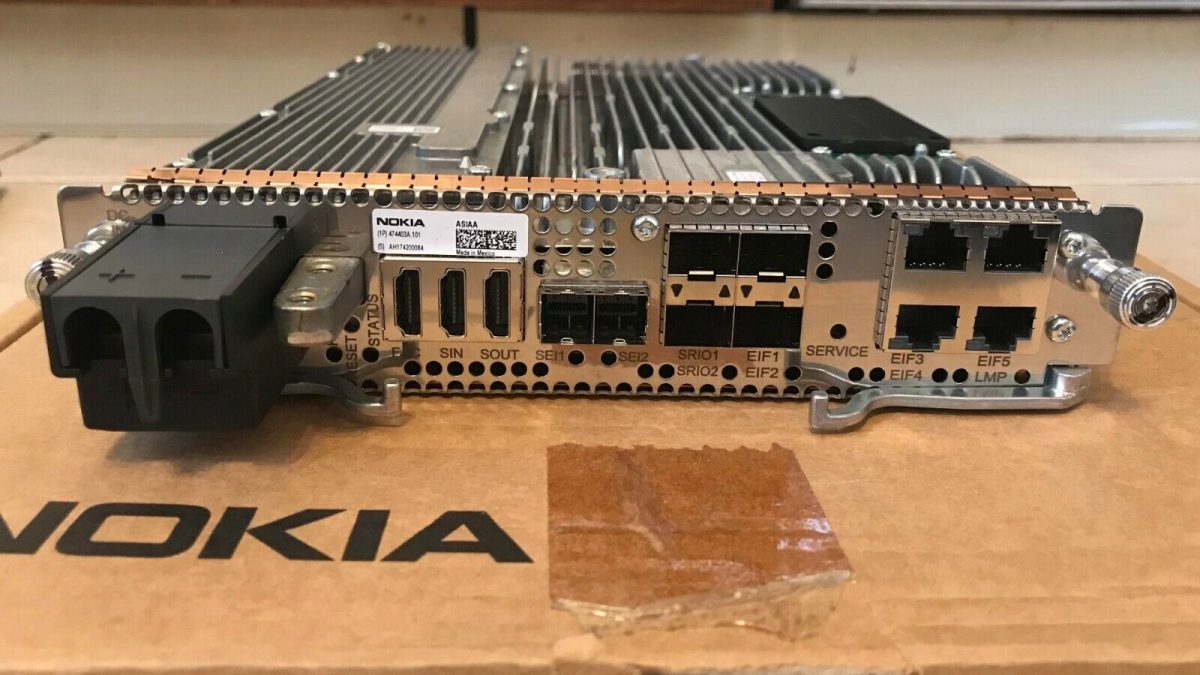1. EXECUTIVE SUMMARY
- CVSS v3 8.4
- ATTENTION: Low attack complexity
- Vendor: Nokia
- Equipment: ASIK AirScale 5G Common System Module
- Vulnerabilities: Improper Access Control for Volatile Memory Containing Boot Code, Assumed-Immutable Data is Stored in Writable Memory
2. RISK EVALUATION
Successful exploitation of these vulnerabilities could result in the execution of a malicious kernel, running of arbitrary malicious programs, or running of modified Nokia programs.
3. TECHNICAL DETAILS
3.1 AFFECTED PRODUCTS
The following versions of Nokia ASIK AirScale, a baseband unit, are affected:
- ASIK 474021A.101
- ASIK 474021A.102 (not affected by CVE-2022-2484)
3.2 VULNERABILITY OVERVIEW
3.2.1 IMPROPER ACCESS CONTROL FOR VOLATILE MEMORY CONTAINING BOOT CODE CWE-1274
A vulnerability exists in Nokia’s ASIK AirScale system module (versions 474021A.101 and 474021A.102) that could allow an attacker to place a script on the file system accessible from Linux. A script placed in the appropriate place could allow for arbitrary code execution in the bootloader.
CVE-2022-2482 has been assigned to this vulnerability. A CVSS v3 base score of 8.4 has been assigned; the CVSS vector string is (AV:L/AC:L/PR:L/UI:N/S:C/C:N/I:H/A:H).
3.2.2 IMPROPER ACCESS CONTROL FOR VOLATILE MEMORY CONTAINING BOOT CODE CWE-1274
The signature check in the Nokia ASIK AirScale system module version 474021A.101 can be bypassed allowing an attacker to run modified firmware. This could result in the execution of a malicious kernel, arbitrary programs, or modified Nokia programs.
CVE-2022-2484 has been assigned to this vulnerability. A CVSS v3 base score of 8.4 has been assigned; the CVSS vector string is (AV:L/AC:L/PR:L/UI:N/S:C/C:N/I:H/A:H).
3.2.3 ASSUMED-IMMUTABLE DATA IS STORED IN WRITABLE MEMORY CWE-1282
The bootloader in the Nokia ASIK AirScale system module (versions 474021A.101 and 474021A.102) loads public keys for firmware verification signature. If an attacker modifies the flash contents to corrupt the keys, secure boot could be permanently disabled on a given device.
CVE-2022-2483 has been assigned to this vulnerability. A CVSS v3 base score of 8.4 has been assigned; the CVSS vector string is (AV:L/AC:L/PR:L/UI:N/S:C/C:N/I:H/A:H).
3.3 BACKGROUND
- CRITICAL INFRASTRUCTURE SECTORS: Communications
- COUNTRIES/AREAS DEPLOYED: Worldwide
- COMPANY HEADQUARTERS LOCATION: Finland
3.4 RESEARCHER
Joel Cretan of Red Balloon Security reported these vulnerabilities to CISA.
4. MITIGATIONS
Nokia has released technical support notes containing mitigation instructions for impacted Nokia users. Users should contact Nokia to receive further information.
CISA recommends users take defensive measures to minimize the risk of exploitation of these vulnerabilities. Specifically, users should:
- Minimize network exposure for all control system devices and/or systems, and ensure they are not accessible from the Internet.
- Locate control system networks and remote devices behind firewalls and isolate them from business networks.
- When remote access is required, use secure methods, such as Virtual Private Networks (VPNs), recognizing VPNs may have vulnerabilities and should be updated to the most current version available. Also recognize VPN is only as secure as its connected devices.
CISA reminds organizations to perform proper impact analysis and risk assessment prior to deploying defensive measures.
CISA also provides a section for control systems security recommended practices on the ICS webpage at cisa.gov/ics. Several CISA products detailing cyber defense best practices are available for reading and download, including Improving Industrial Control Systems Cybersecurity with Defense-in-Depth Strategies.
Additional mitigation guidance and recommended practices are publicly available on the ICS webpage at cisa.gov/ics in the technical information paper, ICS-TIP-12-146-01B–Targeted Cyber Intrusion Detection and Mitigation Strategies.
Source:


Stay connected